'In Your face' mercantile display - the Greenway aisle at Tiverton
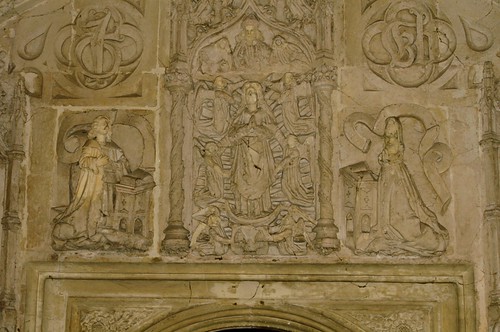
Now this is something that has always fascinated me, it fascinated me so much that I very nearly did my PhD thesis on this subject, before the stained glass of Nottinghamshire and Derbyshire drew me away. At the very end of the Middle Ages, from around 1450 onwards I suppose, we see an increase in overt personal display by patrons of medieval English church buildings. We see an overloading of decoration on buildings and works of art with personal devices that exist to elicit intercession, but also refer to the status of individuals, to their occupation and their family alliances. This sort of display is particularly strong among the mercantile elite, among what you could call the nouveau-riche of the period. This sort of 'in-your-face' display is wonderfully represented by this fascinating structure, the Greenway porch and chapel at Tiverton in Devon.

This chapel and porch were constructed in 1517 by John Greenway (died 1529), the chapel was intended to serve as his mortuary chapel. The first thing you notice as you approach the church is that the chapel and porch are built of strikingly different material to the rest of the church building. The white limestone of the building immediately stands out.
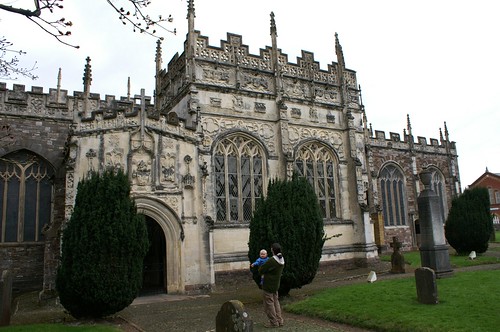
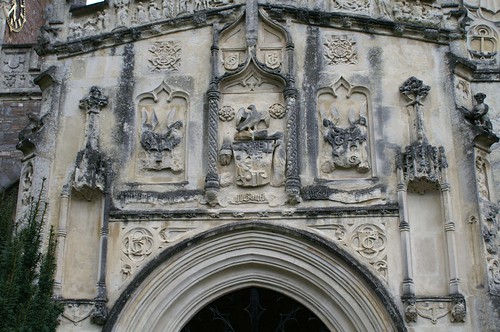
As you approach the south door, you find yourself overloaded with information, which tell you more or less everything you need to know about the patron. John Greenway's coat of arms stands out in the position of honour directly above the doorway. In the spandrels on either side of the door are his conjoined initials 'J G' and they appear again twice above his coat of arms. You certainly know where he stands politically, his loyal allegiance to the Tudor cause is represented by two very prominent double roses. The display continues when you enter the porch (see above), for over the doorway into the church appear Greenway and his wife, kneeling at faldstools on either side of the Virgin Assumptive.
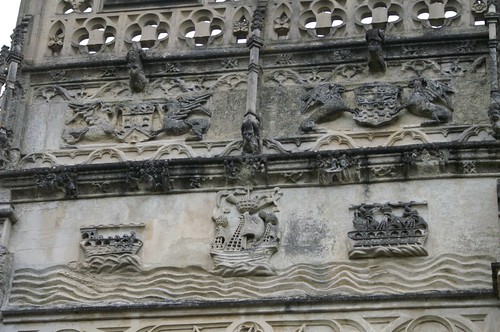
Returning to the exterior of the chapel, for the decoration of the chapel parapet, he has chosen to use decoration that refers specifically to his trade, his trade as a cloth and wool merchant and ship owner. The arms of his trade Gilds, the Drapers Company of London, the wool Staple of Calais, the Merchant Adventurers of Bristol all appear. As do some of Greenway's fleet. He is known to have had ships working out of Dartmouth and Bristol and here they appear.
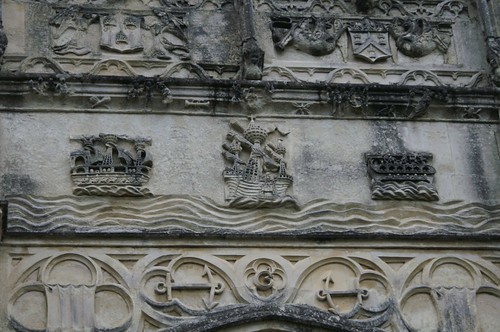
Comments
Any idea why the BVM is shown with uncovered, flowing hair in the English medieval depictions of the Assumption that I've seen? Admittedly, I haven't seen that many, but it seems odd not to show her veiled.